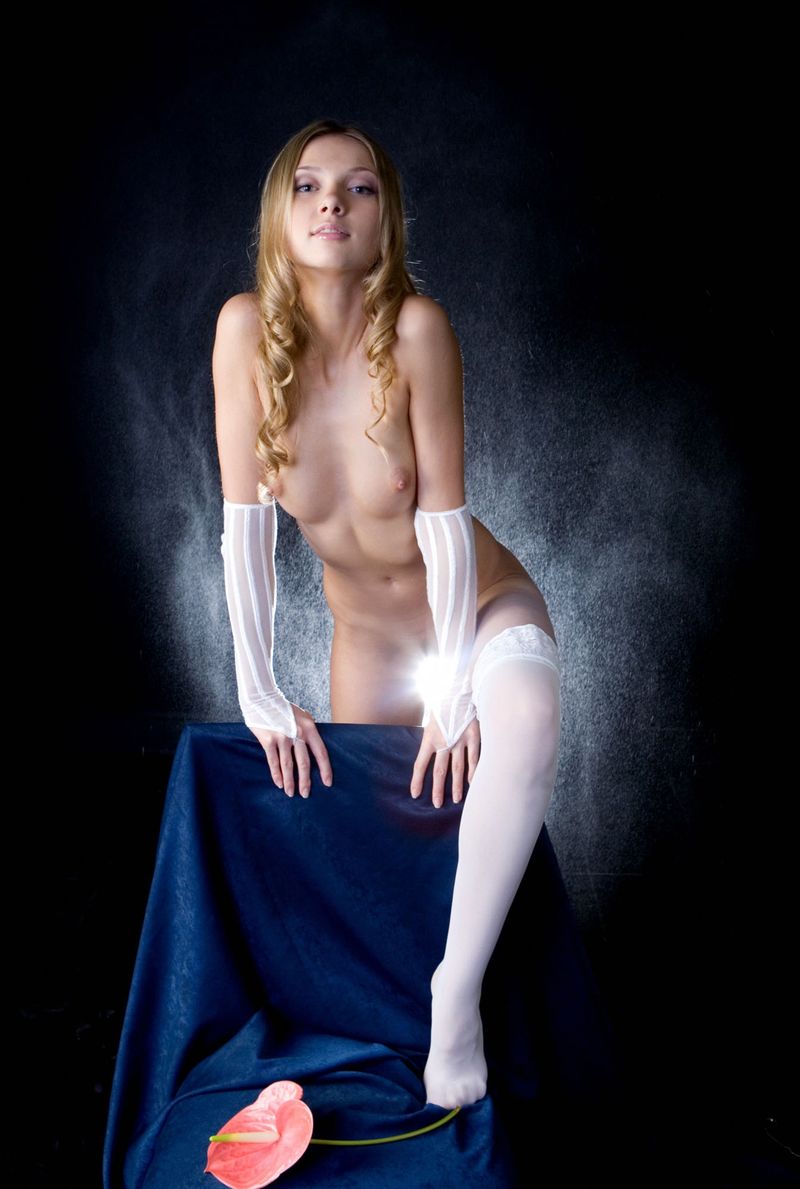|
|
Cute Young Blonde Girl Wearing White Hold-ups And Evening Gloves With A Flower In The Studio
|
Mousquetaire
The best-known type of opera glove, the mousquetaire, is given this name due to the wrist-level opening (most commonly three inches long) which is closed by three (usually) buttons or snap closures, most frequently made of pearl or some lookalike material. The mousquetaire is originally derived from the gauntlets worn by French musketeers of the 16th and 17th centuries, although, tongue-in-cheek, according to Ambrose Bierce in The Devil's Dictionary, 1911:
“Mousquetaire, n. A long glove covering a part of the arm. Worn in New Jersey. But "mousquetaire" is a mighty poor way to spell muskeeter.”
Mousquetaire gloves have buttons at the wrist so the wearer could open the buttons and slip her hand out without taking the whole glove off. The finger section would be folded in and kept away tidily. This is how ladies wore gloves while dining. After the meal they would put their hands back into the gloves, usually for the rest of the evening. During the 19th century, especially from the mid-Victorian era onwards, gloves were tailored so as to fit very tightly onto the hands and arms—so tightly, in fact, that it was often necessary to use aids such as talcum powder and buttonhooks to put on one's gloves; therefore, it was considered somewhat uncouth to put on or remove one's gloves completely in public and women would make sure to don their gloves in the privacy of their homes before going out to some event (another reason for the popularity of the mousquetaire opening). The mousquetaire opening/fastening for women's long gloves seems to have become most popular during the Victorian era; during the Napoleonic/Regency period, women's long gloves were often tailored to fit loosely on the wearer's arm, and were often worn gathered below the elbow or held up on the biceps with a garter-like strap. (In the 2005 film version of Pride and Prejudice, Rosamund Pike and several other actresses wear opera-length gloves with drawstring ties at the top of the glove, but this might not be an accurate representation of the style of long gloves in the Regency era; fashion plates from the period do not appear to show gloves with drawstring-type ties, but do often show women wearing gloves held up by garterlike straps or ribbons.)
|
|









